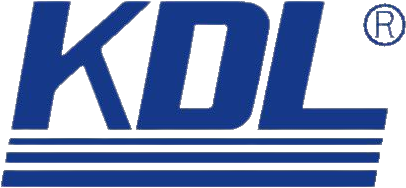
If you suffer from seasonal allergies, dust sensitivities, or sinus congestion, a nasal wash syringe for allergy relief could be a game-changer. Nasal irrigation is a time-tested method to clear nasal passages, reduce congestion, and relieve allergy symptoms. Unlike traditional nasal sprays, nasal wash syringes allow you to control the flow of saline solution, ensuring a deep and thorough cleanse.
But with so many options available, selecting the best nasal wash syringe can feel overwhelming. From different sizes to varied designs, knowing what features matter most can help you make an informed decision. In this guide, we’ll walk you through the benefits of using a nasal wash syringe, key factors to consider, and how to properly use one for maximum relief. By the end, you’ll be well-equipped to choose the right tool for your needs and breathe easier every day.
Why Use a Nasal Wash Syringe for Allergies?
Nasal wash syringes work by flushing saline solution through your nasal passages to remove allergens like pollen, dust, or pet dander. This process, known as nasal irrigation, can reduce congestion and irritation without the need for medications. Research, including studies from health organizations like the American Academy of Allergy, Asthma & Immunology, shows that regular nasal rinsing can ease allergy symptoms effectively.
Unlike antihistamines, which may cause drowsiness, or decongestants, which can dry you out, a nasal wash syringe offers a natural approach. It’s a straightforward tool that puts you in control of your allergy relief, making it a popular choice for those seeking alternatives to pills or sprays.
Benefits of Using a Nasal Wash Syringe
Using a nasal wash syringe for allergy relief comes with several advantages:
- Effective Irrigation – Unlike spray bottles, a syringe provides controlled pressure, ensuring a deep cleanse.
- Reduces Congestion – Flushing out allergens and mucus helps clear nasal passages for easier breathing.
- Drug-Free Relief – Ideal for individuals seeking natural home remedies for allergy relief without medications.
- Prevention of Sinus Infections – Regular rinsing helps reduce bacteria buildup, lowering the risk of sinus infections.
- Customizable Use – You can adjust the saline concentration and flow to suit your comfort level.
Nasal irrigation isn’t just for allergy sufferers. If you live in a dry climate, work in a dusty environment, or frequently experience sinus congestion, a nasal wash syringe can significantly improve your breathing quality.
Key Features to Look for in a Nasal Wash Syringe
Not all nasal wash syringes are created equal. To find the best nasal wash syringes, consider these factors:
1. Material and Design
Look for medical-grade, BPA-free materials to ensure safety. Soft silicone tips can prevent nasal discomfort and provide a better seal.
2. Size and Capacity
Syringes come in various sizes, typically ranging from 30ml to 100ml. Larger capacities reduce the need for multiple refills during use.
3. Ease of Use and Cleaning
A syringe with clear volume markings and an ergonomic grip makes application easier. Also, ensure the design allows thorough cleaning to prevent bacteria buildup.
4. Adjustable Flow Control
Some models offer variable pressure options, which can be beneficial for individuals with sensitive sinuses.
Choosing a high-quality syringe ensures a comfortable and effective nasal rinse experience.
How to Choose the Right Nasal Wash Syringe for Your Needs
Selecting a nasal wash syringe depends on your specific needs. Here’s a simple breakdown:
- For daily allergy relief – Choose a medium-sized syringe (50-70ml) with a soft-tip design.
- For sinus infections – Opt for a larger syringe (80-100ml) with controlled pressure settings.
- For children – A smaller syringe (30-50ml) with a gentle flow is best.
- For travel use – A compact, leak-proof design is ideal for portability.
Step-by-Step Guide on Using a Nasal Wash Syringe
- Prepare the Saline Solution – Mix sterile or distilled water with non-iodized salt.
- Fill the Syringe – Draw the saline solution into the syringe.
- Tilt Your Head Slightly – Lean over a sink and tilt your head sideways.
- Insert the Syringe Tip Gently – Position it in one nostril.
- Apply Gentle Pressure – Slowly push the solution through, allowing it to exit the opposite nostril.
- Repeat for the Other Nostril – Switch sides and repeat.
- Blow Your Nose Gently – Remove excess saline and mucus.
- Clean the Syringe – Rinse with warm water and let it air dry.
Common Mistakes to Avoid When Using Nasal Wash Syringes
- Using Tap Water – Always use distilled or previously boiled water to prevent infections.
- Applying Too Much Pressure – Excess force can irritate nasal tissues.
- Neglecting Proper Cleaning – Failing to clean your syringe can lead to bacterial buildup.
- Overuse – Using a nasal wash syringe more than twice daily can dry out nasal membranes.
- Skipping the Right Angle – Keep your head at a proper tilt to avoid discomfort.
By avoiding these common mistakes, you ensure a safe and effective nasal irrigation experience.
Conclusion
Using a nasal wash syringe for allergy relief is a simple yet effective way to manage allergies and sinus issues. By selecting the right syringe, following proper technique, and avoiding common mistakes, you can experience clearer breathing and better overall health.
KDLNC Nasal Wash Syringe: Precision Sinus Care for Allergies
At KDLNC, we specialize in manufacturing high-quality nasal wash syringes for allergy relief that prioritize safety, comfort, and effectiveness. Our syringes are made from medical-grade ensuring a gentle yet powerful rinse to clear nasal passages. Designed for easy use and thorough cleaning, KDLNC nasal wash syringes provide a reliable solution for those suffering from allergies, sinus congestion, and respiratory discomfort. Choose KDLNC for a healthier, more comfortable breathing experience.

